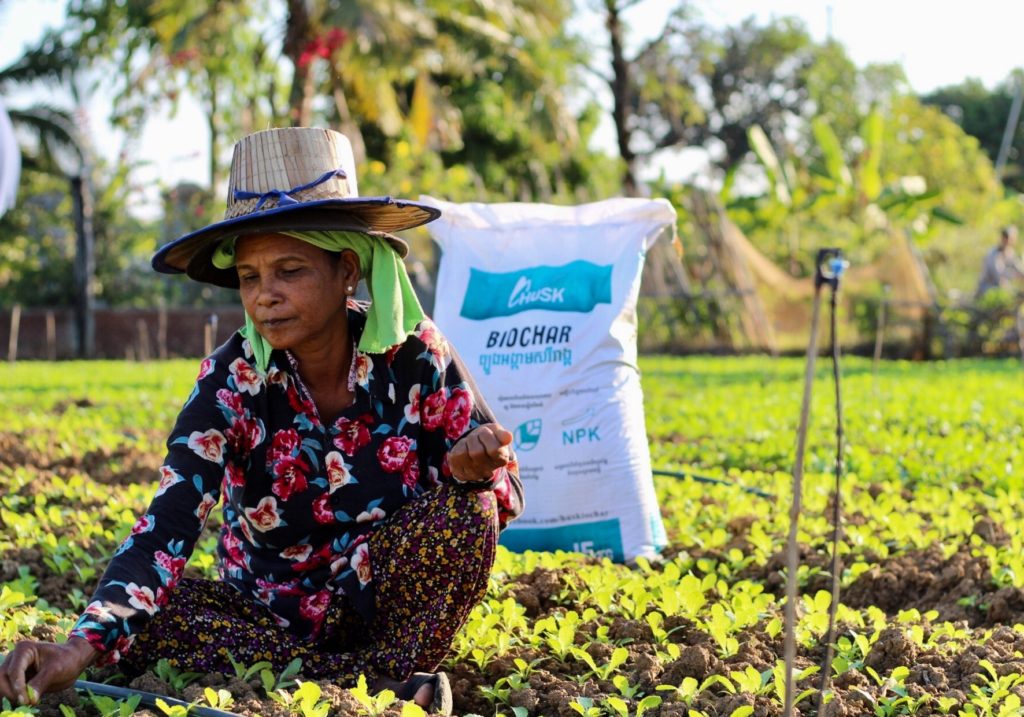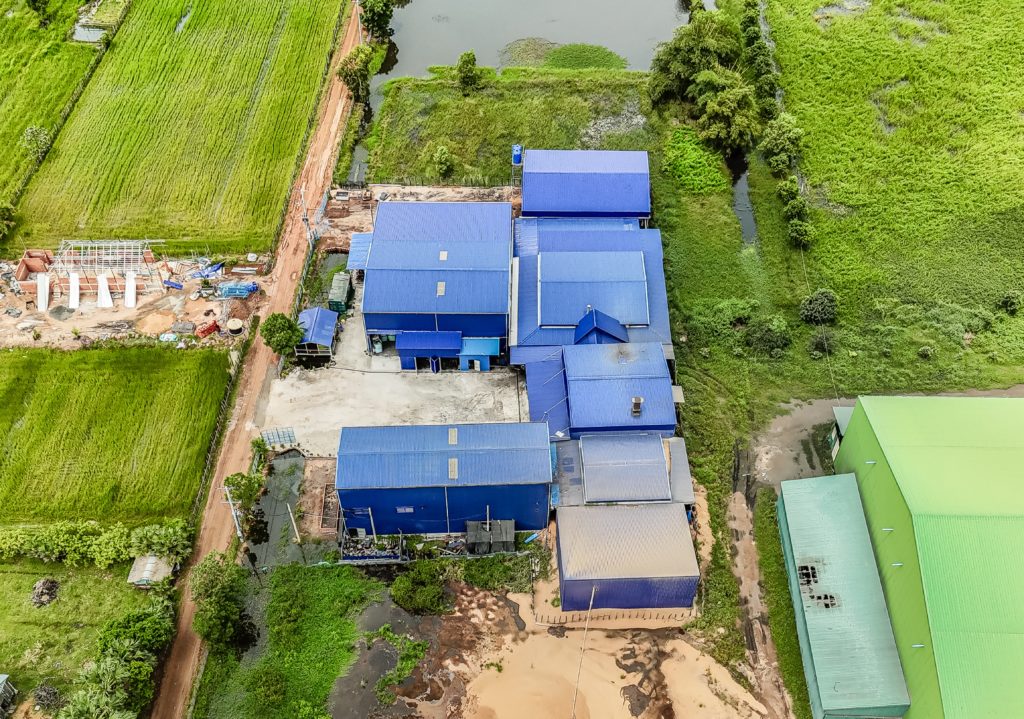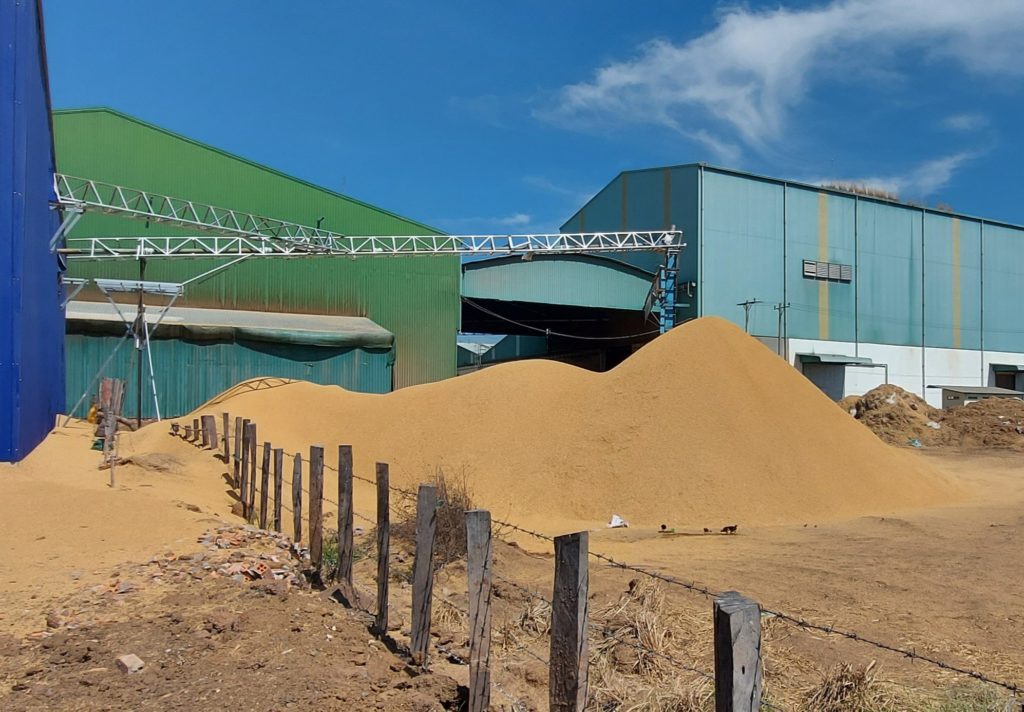Kampong Thom province, Cambodia, June 2025. atmosfair and HUSK are building a pyrolysis plant in Cambodia that uses an innovative technology to produce biochar from rice husks. We have now signed a contract with the project developer HUSK who developed a process to convert the residues from rice production into biofertilizers. This fertilizer permanently fixes carbon in the soil and thus ensures negative emissions.
“Rice is the most important staple food in Southeast Asia. When its grains are milled, tons of husks are accumulated which are usually burnt or rot unused. We are delighted that we can now use this waste for climate protection,” says atmosfair project manager Constanza Terazzi. atmosfair is financing the construction and operation of a pyrolysis plant in the province of Kampong Thom in Cambodia. It will be commissioned in November 2025 and will produce approximately 3 tons of biochar every day from 6 tons of rice husks. The husks are produced in a rice mill right next to the pyrolysis plant. This produces 620 tons of biochar per year, which permanently brings 750 tons of CO₂ into the ground.

First pyrolysis technology for rice husks
HUSK co-founder & chairwoman Heloise Buckland explains why HUSK’s technology is a key milestone for the biochar industry: “Rice husks are a difficult residual biomass that is not as easy to carbonize as wood, for example. This is mainly due to the high silica content. But over the last 5 years, we have found a way to make high quality biochar from this material, which presents a huge opportunity globally given 150 million tonnes are produced every year.” In Cambodia alone, two million tons of rice husks are produced every year.
HUSK processes the biochar into nutrient-rich fertilizers specifically formulated to meet the needs of smallholder farmers. The biochar absorbs important nutrients as phosphorus, nitrogen and potassium in its pores ultimately reducing the volume of synthetic fertilizers needed. HUSK offers biochar-based fertilizers for different crops and different stages of crop including rice, coffee, cashew, sugarcane and a range of horticulture crops ensuring an optimized mixture of nutrients.

Expansion to Vietnam planned
The biochar plant in Cambodia will be followed by a second plant in Vietnam. From 2026, this plant will produce approximately 10 tons of biochar per day from 20 tons of rice husks. Vietnamese rice production also produces large quantities of residual biomass which has often been disposed or incinerated to date.
In Southeast Asia, soils are highly depleted, so farmers add increasing amounts of nutrients to ensure plant growth. Until now, this has mostly been done with mineral fertilizers, the production and application of which releases greenhouse gases. Biofertilizer made from biochar is a climate-friendly substitute for this. HUSK aims to support at least 10,000 farmers by 2030 using biochar as a key tool in the transition to regenerative agriculture.
Background: pyrolysis
During pyrolysis, we heat the rice husks to high temperatures. This releases energy-rich gases, which we burn to generate energy for operating the plant. What remains is pure carbon, which the rice plants obtain from the carbon dioxide in the air as they grow. When used as fertilizer, the carbon remains bound in the soil for centuries.



 Share
Share Tweet
Tweet